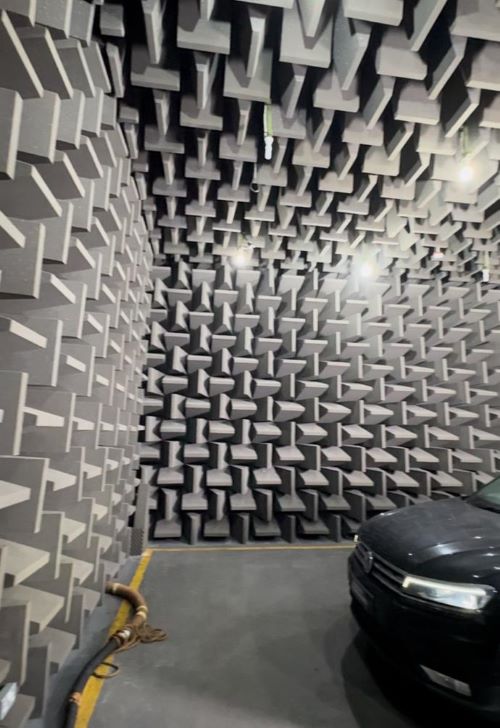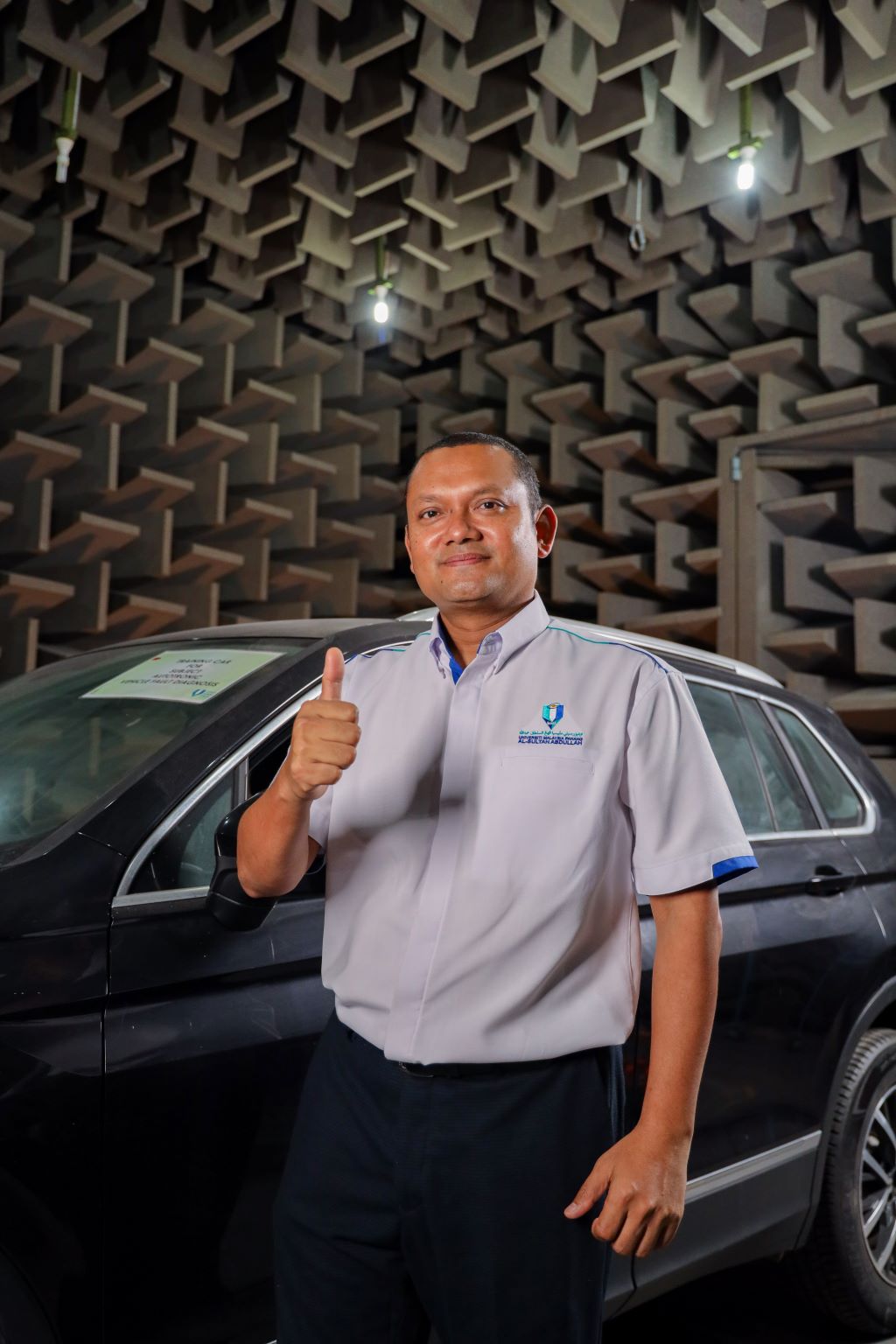UMPSA the only university in Malaysia to have an anechoic chamber for vehicle testing
PEKAN, January 25, 2024 – Have we ever known that there is a room design that is recognised as the quietest place in the world?
The design, known as an anechoic chamber, has officially earned worldwide recognition in The Guinness Book of World Records as the world’s quietest place ever created.
The design of this room is reported to have an unusual level of silence so that the sound meter shows a negative value of up to 20 decibels (dB).
This condition makes one able to hear the heartbeat, breath and even the sound of his own blood flow.
In fact, an individual is also said to be unable to survive long in this room due to his own hallucination and fear disorder.
This room is specifically designed to absorb and reduce all reflections of sound and electromagnetic waves for the purpose of conducting sound tests and identifying the noise level of an instrument or machine.
Large companies have widely used the use of anechoic chambers as laboratories and facilities for sound testing of their products such as automotive, electronics, acoustics, aerospace and information technology industries.
Based on the same needs, Universiti Malaysia Pahang Al-Sultan Abdullah (UMPSA) built a semi-anechoic chamber in 2008 with an area of 285.12 square meters (m2).
This facility is part of the main assets of the university under the management of the Centre for Automotive Engineering (AEC) at the Pekan campus.

With its spaciousness that can accommodate a small truck, it makes UMPSA the only university in Malaysia that has facilities with full vehicle testing capabilities in addition to industrial company Proton which also has equivalent facilities.
The main entrance area is also specially designed with a height of 3.25 meters and a width of 2.78 meters to facilitate access and entry of large-scale machines.
It also has a unique wall design in the form of a tapered triangular prism that covers the entire wall with the use of materials such as damping foam that has a high absorption capability to absorb sound waves.
However, this partial space shows that it only partially absorbs radio frequency waves because the floor surface is reflective rather than absorbing as the use of materials on the wall structure.
The floor surface of the room is built of hard concrete covered with special paint for sound reflection.
According to the Director of AEC, Professor Dr. Rizalman Mamat, the semi-anechoic chamber at UMPSA is often used for research and learning purposes involving mechanical, automotive, electrical and electronic programmes.
“This room is often used for sound studies of internal combustion engines (diesel engines and gasoline engines), exhaust noise and vehicle structures such as doors, air conditioning and vehicle interior cabins.
“In fact, electric vehicles can also be tested here even though they relatively emit low noise.
“Apart from automotive-related fields, it is also used to measure the noise of vibrating building structures, air turbines and the noise of portable machines such as lawnmowers, blowers, sprayers, washing machines, grinding machines, drilling machines and others,” he said.
He added that, uniquely, this room is also equipped with air conditioning and ventilation for vehicle exhaust fumes to enable testing on vehicles without affecting the air quality in the room.
He added that this facility is not only limited to the internal use of the university but it is also open for external use.
“We at AEC are indeed open and welcome opportunities for collaboration with industry or educational institutions to conduct their studies in this space.
“Many parties from educational and research institutions have begun to collaborate with UMPSA in utilising this technology.
“In fact, this facility has also been used by the well-known automotive industry in the country for testing their research,” he said.
By: Nur Ainaa Adhreena Muhamad Shukri, Centre for Corporate Communications
Translation by: Dr. Rozaimi Abu Samah, Faculty of Chemical and Process Engineering Technology
- 269 views










